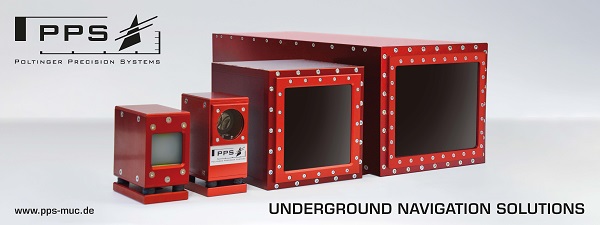- Pages
- Robin McAuley
- Tunnel Boring Machine (TBM) Cutter Head Y-Parts: A guide to buying TBM Cutters and Cutter Support...
- What is the difference between welding, soldering and brazing
What is the difference between welding, soldering and brazing: Revision
- Soldering:
Soldering is used to join two or more pieces of similar or dissimilar metals to each other. An example of dissimilar metals for soldering to each other are tungsten-carbide bits and steel.,
In soldering, the metals are "glued` to each other by melting a material called "solder" between them and then letting it cool down. Usually a fire torch is used for melting the solder.
When you solder two pieces to each other, they do not melt and become one. Instead, they are sort of "glued" to each other.
The solder (the "glue" metal) have lower melting point than the metals that it glues to each other. Usually soldering is done at a lower temperature than welding and brazing.
- Brazing:
Brazing is in many ways similar to soldering. Like soldering, it is used to join two or more pieces of similar or dissimilar metals to each other. Like soldering, the brazing material has a lower melting temperature than the metals that it is used to adjoin. On the other hand, brazing requires much higher temperatures compared to soldering for the "glue" material to melt and join the metals.
There are various methods for melting the brazing material. In tunnel machinery industry, for Y-Parts the most common methods used for melting the brazing material are Torch brazing, Furnace brazing, Vacuum Brazing and Induction Brazing.
- Welding:
You can only weld two or more similar metals to each other. For example, you cannot weld a tungsten-carbide bit to a steel piece.
When you weld two metals to each other, you join them to each other by melting them via applying high temperatures on them and the welding metal. Basically a good welder creates one single piece from the welded parts (although it may not look so).
It is important that the welder applies the right degree of temperature during the process, otherwise there is the risk of changing the properties of the adjoining metals and making them more breakable.
Soldering, Brazing and Welding. How do they compare?
Welding creates the strongest join of metals. But here you are limited by the fact that, you can only join similar metals to each other by welding.
If you want to join dissimilar metals, you have no chances of using welding, instead you have to choose between brazing and soldering methods.
Brazing creates the the second strongest join. But brazing is more difficult to master than soldering, Not every producer can master the tricks of good brazing.
Another advantage of brazing is that, it is possible to automate the brazing process (hence decrease the human error and increase quality predictability). This is especially possible in furnace brazing. A good brazing results in brazing material uniformly cover all adjoining surfaces of the adjoining metals, hence creating a good, strong join.
Soldering is easy to apply. But it gives the weakest join of among these three methods.
Other factors effecting the strength of joining the metals
It is very important to stress that, whether you use welding, brazing or soldering for adjoining metals to each other, the resulting strength of the join depends very much on the quality of the materials used and also how it is done.
Regarding the quality of the materials used: For example, what is the alloy of the welding metal, brazing or solder used?
Regarding how it is done: How good are the processes? For example, does the welding machine create a consistent heat? Is the heat created suitable for the welding, brazing or soldering? In case of brazing, is the programming of the furnace (heating and cooling timing etc.) the right one for the brazing?
Is it done manually or automatically? For example is welding, brazing or soldering done manually by human beings or by robots? Human beings can produce excellent work. But the problem with human beings is that, they also produce inconsistent quality of work. It is normal. Everybody has ups and downs. Hence an excellent welder can sometimes create sloppy work for whatever reason, like for example when her/his concentration is distracted by some issue at home, Also normally at a factory there are more than one welders and they will all produce work at different levels of quality. When a solderer is troubled by some thought, maybe will not apply the right amount of solder or not in a right way and that solder will not reach all faces of the adjoining metals hence creating partial join and as a result, a weaker join.
The best way of ensuring consistent level of quality in welding, brazing, soldering is automating the process. That is; letting the robots do the welding, brazing, soldering or using other automated processes like furnace brazing. Of course it is still the human beings who program the robots or furnaces and there is still a window for a lot of mistakes. On the other hand, once they are programmed properly, you will always get good quality results. Even if they are programmed poorly, at least your quality level will be consistent! Predictability is still a quality!
Having said this; in tunnel machinery industry, as far as the Y-parts are concerned, almost all producers do welding, brazing or soldering manually. The only area which some producers automate is brazing and it is almost always furnace brazing.
History
What is the difference between welding, soldering and brazing
Revision created by Robin McAuleyWhat is the difference between welding, soldering and brazing
Revision created by Robin McAuleyWhat is the difference between welding, soldering and brazing
Revision created by Robin McAuleyWhat is the difference between welding, soldering and brazing
Revision created by Robin McAuleyWhat is the difference between welding, soldering and brazing
Revision created by Robin McAuleyWhat is the difference between welding, soldering and brazing
Revision created by Robin McAuleyWhat is the difference between welding, soldering and brazing
Revision created by Robin McAuleyWhat is the difference between welding, soldering and brazing
Revision created by Robin McAuleyWhat is the difference between welding, soldering and brazing
Revision created by Robin McAuley
cover tunnel photo by: Matt Brown from London, England / CC BY
Copyright 2019-2024 TunnelContact.com








